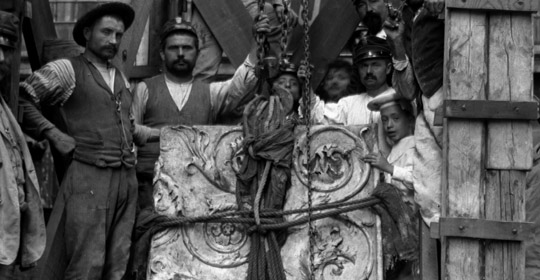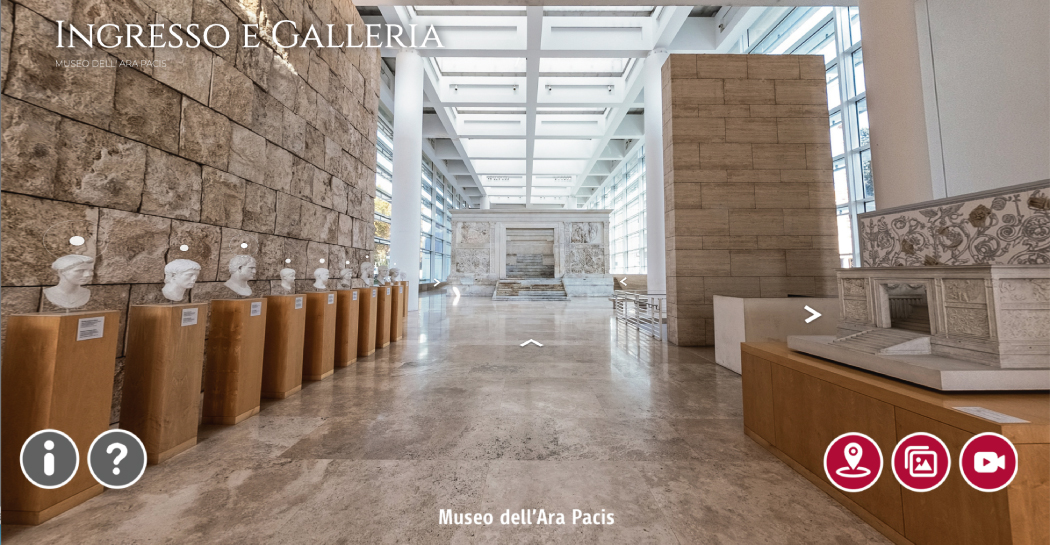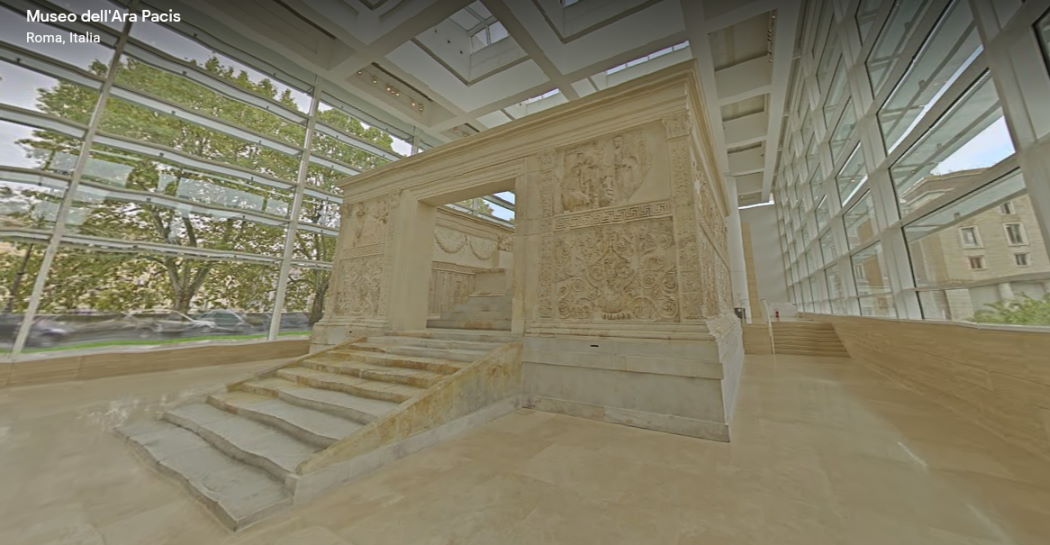The rediscovery
The recovery of the Ara Pacis began in the sixteenth century, and finished four centuries later, after many chance discoveries and amazing excavations, with the recomposition of the monument in 1938.

The first sign of the resurgence of the altar from the foundations of the Palace of the Via di Lucina (successively owned by the Peretti, then the Fiano, then the Almagià families) came from an engraving made by Agostino Veneziano some time before 1536, which represented a swan with spread wings along with a sizeable piece of spiralled frieze. This is a clear sign that at that date the corresponding plaster-work of the Ara Pacis was already known. A subsequent recovery attempttook place in 1566, the year in which the cardinal Giovanni Ricci di Montepulciano acquired 9 large blocks of carved marble, which came from the Altar.
After this rediscovery, we hear nothing more about the altar until 1859, when the Peretti Palace, which had by now become the property of the Duke of Fiano, needed structural work, during which the base of the altar was seen, and numerous other sculpted fragments, not all of which were extracted "due to the narrowness of the site and fear of endangering the walls of the palace". Numerous fragments of the spiralled frieze were recovered on this occasion, but it was only in 1903, following Friedrich von Duhn's recognition of what the Altar was, that a request was sent to the Ministry of Public Education to continue the excavations. Their success was made possible by the generosity of Edoardo Almagià, who, as well as giving his permission for the exploration, donated in advance whatever should be discovered underneath the palace and made an ongoing financial contribution to the expenses of the excavation.
In July 1903, after the work had been started, it quickly became obvious that the conditions were extremely difficult and that the stability of the palace might well be compromised in the long-term. Therefore, when about half the monument had been examined and 53 fragments recovered, the excavation was called to a halt. In February 1937, the Italian Cabinet decreed that, as it was the two thousandth anniversary of the birth of Augustus, the excavations should recommence, using the most advanced technology.
Between June and September 1938, as the excavations continued, work also began on the pavilion intended to house the Ara Pacis by the banks of the Tiber. On the 23rd September, the date on which the Augustan year ended, Mussolini inaugurated the monument.







































